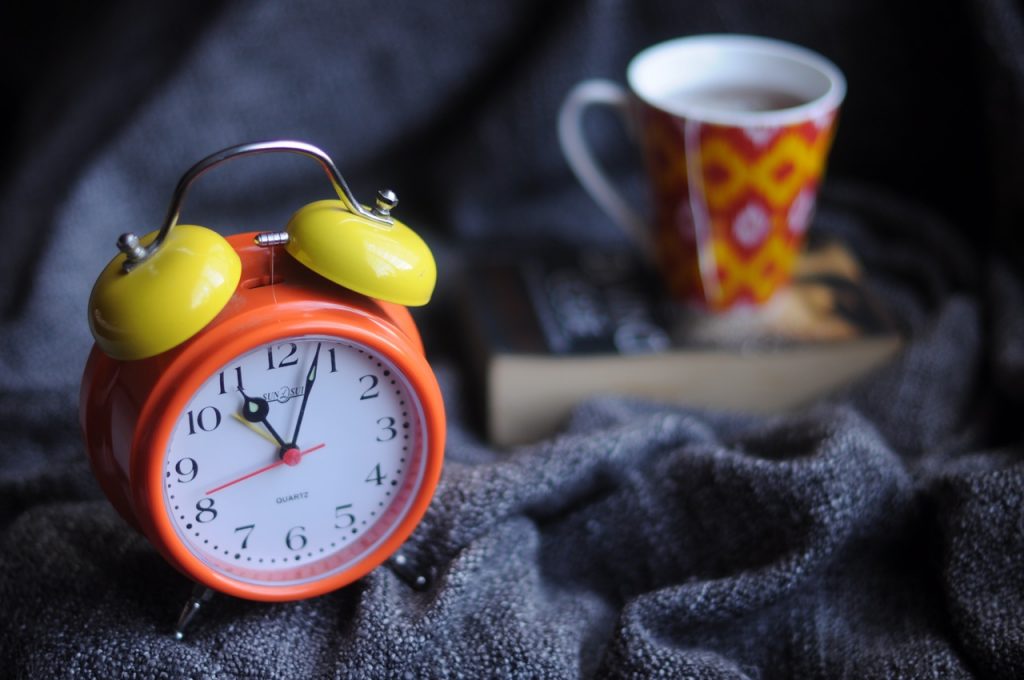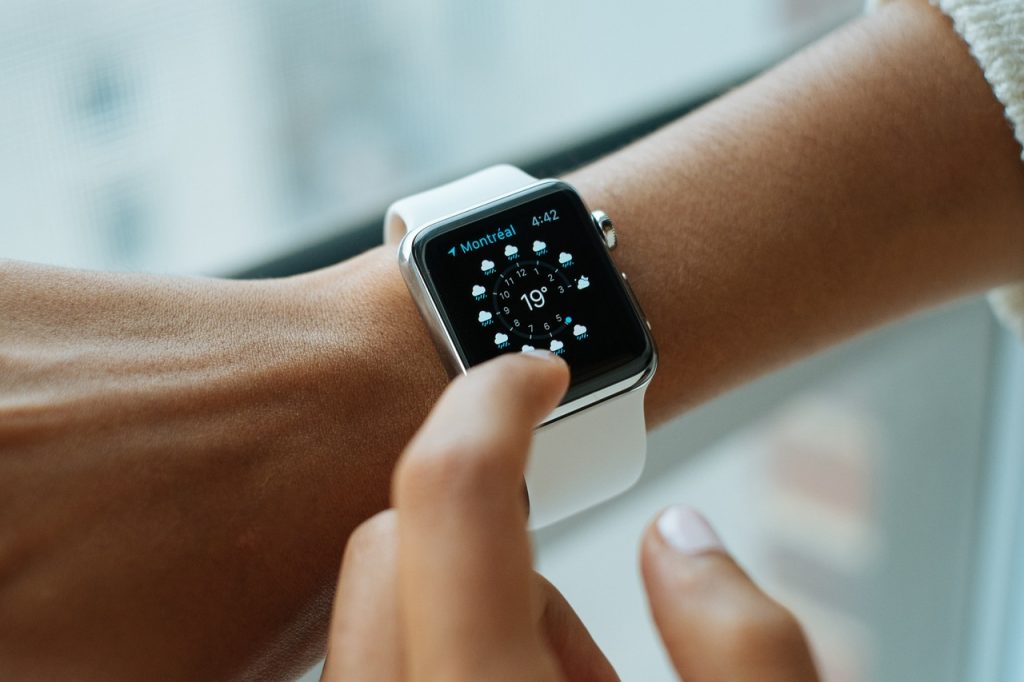[Article updated on 19/09/2023]
Chrononutrition is a dietary method based on chronobiology. It consists of eating at the right time, during the day or according to your biological clock. This method avoids submitting to deprivations or prohibitions associated with overly restrictive diets. This eating method allows you to benefit from good health and lose weight without depriving yourself of eating. However, it requires compliance with certain indications as well as basic principles.
Chronobiology or the 24 hours of the body
Made up of the prefix chrono associated with the word biology, chronobiology is defined as the study of biological rhythms within the body. Indeed, the functioning of the organism is subject to a biological rhythm which corresponds to a periodic, cyclical variation or at regular time intervals of a physiological function, of cellular metabolism, of hormonal secretion, etc. The same enzymes and hormones are not secreted over a 24 hour period.
There is, over time, a programming of the various metabolic, nervous, endocrine activities, but also variations with regard to the duration of a biological activity. Some biological rhythms are characterized by a duration of a few minutes. Others, on the other hand, extend over a period of one or more hours. Typically, many body functions are subject to a 24-hour cycle or circadian rhythm.
An internal clock, regulated by external stimuli (day-night alternation), imposes a 24-hour cycle on our body. It is an area of the brain that synchronizes throughout a 24-hour day, while generating a number of cycle-regulated biological reactions. It represents a set of mechanisms that make it possible to regulate the distribution of the organism’s activity over time.
Thus, the body functions differently throughout the day and assimilates foods differently depending on when you consume them. In living beings, time has an influence on the entire organism, but also on nutrition. Chrononutrition (consisting of the prefix chrono and the word nutrition) is an application of chronobiology on the nutritional level.

What is chrononutrition?
Developed in 1986 by Doctor Alain Delabos, a French nutritionist, chrononutrition is a method of eating based on the principle of the individual’s biological clock. This eating method is based on chronobiology. It is adapted to the biological clock. In fact, it aims to bring food intake into line with biological rhythms.
Chrononutrition consists of eating according to the individual’s enzymatic secretions, while respecting the natural rhythm of metabolism. It allows you to consume almost all foods,sonly at the right time during the day. Moments during which the body naturally secretes hormones and enzymes necessary for food processing. Because certain enzymatic secretions occur at specific times of the day to facilitate the assimilation and use of foods, to burn nutrients in several food groups in order to avoid fat storage.
During the day, food consumption occurs at times when it is most useful to meet the body’s energy needs and to avoid the storage of food in the form of fat in certain parts of the body. Thus, with chrononutrition, it is about consuming the right foods in the right quantities at the right time in order to enjoy a better state of health, with a healthy body.
The diet is then rebalanced in order to obtain positive results. It is a rebalancing that respects the hormonal and metabolic rhythm, while following the natural rhythm of the body and enzymatic secretions. By rebalancing one’s diet according to the body’s biological rhythms, the subject can lose weight without deprivation. He must, however, eat according to the times of the day.
A medical branch?
Chrononutrition is a method recognized by IRENS (European Research Institute for Nutrition and Health). According to Dr. Tatjana Somborski, chrononutrition is a branch of medicine; it deals with what we consume to live in accordance with the natural rhythms of our hormonal and enzyme production.
Is chrononutrition a diet?
Chrononutrition involves eating the right food at the right time in the correct quantities. The subject can consume whatever he wants, only he must consume the specific foods exclusively at a specific time of the day. There is therefore no food deprivation, as is the case in some restrictive diets. The subject does not have to skip meals, avoid or give up certain foods. It is therefore possible to consume foods prohibited in certain diets.
Thus, chrononutrition is not a diet in the strict sense of the term, nor a weight loss diet. This is a food and nutritional program whose primary goal is not to lose weight, but to stay fit and healthy. The essence of chrononutrition therefore aims to provide the body with what it needs to improve health and lose weight or gain volume.
With chrononutrition, it is not a question of losing weight or kilos but of slimming down in order to achieve a rebalancing of the silhouette. It is more a question of a balanced diet or a dietary reorganization that takes the biological clock into account. Chrononutrition therefore induces a change in eating habits. It is therefore associated with a new way of eating by taking into account the biological rhythms of the body and enzymatic secretions.
What is the principle of chrononutrition?
The principle of chrononutrition is simple. It consists of consuming the right food, in the right quantity at the right time during the day. The diet is carried out, then according to the different times of the day, with in particular a reasoned distribution of foods and proportions taking into account the time, the level of activity, the measurements and the intensity of the an individual’s appetite.
Thus, foods are consumed when they are most useful for the body, which can easily use and manage them optimally. The time at which food is ingested is therefore important, as there is a suitable time for the digestion of proteins, carbohydrates and fat. Indeed, during the day, there is a specific time during which each food group (carbohydrates, proteins, fats) is better digested by the body.
When nutrients are consumed outside of these digestion periods or outside of these time slots, they are not used or transformed, but are stored as fat.
It is useful, in accordance with the principle of chrononutrition, to provide the body with food at the appropriate time for its metabolism or for the absorption of nutrients.

WhatEllare objectives of chrononutrition?
By promoting food intake at the right time and in adequate quantities, chrononutrition helps improve diet. It causes the body to relearn how to consume food in a balanced way. It is the respect of portions and food combinations that allows this nutritional balance. The primary goal is therefore not to lose weight, but to eat well.
Furthermore, chrononutrition allows us to know:
- what to eat at specific times of the day;
- the actions to take to lose weight (by changing the pace and nature of foods);
- the appropriate diet to better manage fatigue.
This change in eating habits helps correct possible nutritional deficiencies. It will result in undeniable well-being. Also, it will allow you to regain the desired weight. Better still, this eating method is greatly useful to people who want to stay in shape.
Improving the diet will promote optimization of the use and intake of nutrients. This significantly lowers cholesterol levels in the body and reduces stored lipids.
In doing so, chromonutrition makes it possible to:
- limit the consequences of excess lipids (weight gain or excess weight, risk of onset of cardiovascular pathologies and metabolic diseases);
- prevent cardiovascular diseases and dyslipidemia (abnormal elevations in the level of cholesterol, fatty acids or lipids in the blood);
- get rid of excess pounds.
This balanced diet also aims to reduce the phenomenon of insulin resistance which is likely to lead to the onset of type 2 diabetes. It will thus help prevent certain metabolic pathologies or metabolic syndrome. This syndrome increases the risk of developing certain diseases (type 2 diabetes, heart disease and stroke). Specialists specify that this syndrome is caused by poor body metabolism.

Lakechrononutrition, how does it work?
Chrononutrition is a nutrition method that will determine the appropriate foods at certain times of the day, with a type of food during certain time slots. The quantity of food to be ingested during these times of the day is also taken into account to ensure the success of this eating method. This right amount varies depending on the size and daily activities performed by the subject during a day. It involves eating an appropriate amount of food at certain times of the day.
But, before adopting this method of eating and to guarantee its success, it will be necessary to evaluate the morphology of the individual and determine its morphotype.
This assessment makes it possible to determine the foods to favor and the right quantities of food to ingest. To do this, several parameters are measured: weight, chest circumference, waist circumference, hip circumference, wrist width and height. These six parameters will make it possible to obtain the morphotype of the individual for adequate menus.
Thus, a personalized dietary program is established according to the individual’s morphotype. This involves specifying a specific diet for each body type. We’re talking about morphonutrition! Doctor Alain Delabos has devoted a book to morphonutrition and published by Albin Michel. It is entitled “slimming beautifully thanks to morpho-nutrition”.
Which foods for which body type?
There are typical foods that correspond to each morphotype. There are 11 morphotypes, namely:
- Cheops,
- Mayans,
- Rubens,
- Schwartzy,
- Athletic,
- Don Camillo,
- Hourglass,
- Monastics,
- Tree trunk,
- Ascetics,
- Galilei.
The application of chrononutrition allows you to have an ideal and very harmonious silhouette which corresponds to that of the Galilei morphotype. To obtain this result or follow chrononutrition normally, you must eat 4 meals a day (breakfast, lunch, snack and dinner) and avoid certain foods, notably milk and yogurt.
Chrononutrition and diabetes or hypercholesterolemia
Chrononutrition can be useful for healthy people as well as people facing health problems. But medical advice is strongly recommended before starting chrononutrition. This precaution is essential in people affected by diabetes or high blood cholesterol levels.
For this purpose, there is a nutritional program intended for people affected by insulin-dependent diabetes. This program aims to control and stabilize this pathology. It is offered by specialists. One of them is Doctor Alain Delabos. He is the author of the book “Preventing and treating diabetes through chrono-nutrition”, published by Albin Michel.
Thus, chrononutrition promotes a well-adapted nutritional program. And, among other things, it helps regulate blood sugar and diabetes, while helping to balance the patient’s diet.
In the presence of hypercholesterolemia, chrononutrition helps restore normal cholesterol levels. Doctor Alain Delabos offers well-adapted recipes in his book. Thus, according to the author, chrononutrition makes it possible to normalize all cholesterol levels.
WhatWhat are the typical chrononutrition menus?
The chrononutrition nutritional plan consists of 4 meals per day with preferred menus and quantities that depend on the size of the subject.
-
Breakfast
Breakfast which is taken within an hour of waking up, is fatty and filling. It is made up of fats, notably cheese and butter, without forgetting slow sugars (cereals, bread). Bread is also on the menu as well as a hot drink without milk or sugar. These foods provide the body with slow sugars, but also fatty acids. They contain protein and good fats.
Also, enzymes come into play during this period of the day, in this case:
- Insulin which is necessary in the morning for the functioning of the organs. Indeed, this secretion of insulin promotes the initiation of the use of slow sugars with the aim of providing the energy necessary for the various oranges in activity;
- The secretion of lipase helps metabolize fats;
- Proteases are secreted during this period to metabolize proteins.

-
Lunch
The meal is dense during lunch. It occurs 4 to 6 hours after breakfast. The menu consists of a normal protein dish (meat), with 1 small portion of starch (pasta, rice, mashed potatoes or bread). There is therefore no starter, but also no cheese and no dessert.
These foods are well indicated because during this period of the day (midday), the body secretes proteases to promote the storage of protein reserves and the establishment of cellular proteins.
-
Afternoon tea
For snacks that are taken at least 5 hours after lunch, you should eat sweet foods. This snack is therefore sweet, notably with dark chocolate or dried fruits or natural fruit juice. These sweet products are recommended because during this period of the day there is a peak in natural insulin secretion which allows the body to burn sugar and use sugar to avoid protein depletion. This use of sugar will also help compensate for fatigue linked to the functioning of the organs.
-
Dinner
Dinner is recommended, when the subject is hungry, 1 hour 30 minutes to 2 hours after the snack. This meal should consist of fish or seafood foods, with vegetables. It is light and easy to digest, with foods that help preserve sleep, because an excessively rich menu in the evening is likely to disrupt sleep.
In the evening, the assimilation of food is considerably slowed down since there are practically no digestive secretions. The metabolism of nutritional intake is not considerably active, so what is not metabolized will be stored. Thus, to avoid water storage and consequently the appearance of cellulite, vegetables are included in the evening menu.

Does chrononutrition cause hair loss?
Weight loss diets, often initiated for a long period of time, without medical advice, are likely to cause hair loss. Significant or too rapid weight loss, consecutivee to a restrictive diet and a nutritional deficiency, can be the cause of such hair loss. In fact, diets that are too restrictive are harmful to hair. Due to the induced dietary imbalance, they eliminate certain essential nutrients for hair growth and growth.
Far from being a restrictive weight loss diet, chrononutrition allows you to eat in a balanced way. It promotes a reasonable intake of proteins and fats which are necessary for health and hair growth. According to Doctor Alain Delabos, chrononutrition cannot be the cause of hair loss.
LThe benefits of chrononutrition
Chrononutrition allows you to eat the right foods, in sufficient quantities, at the appropriate times. All while respecting the biological clock. It has many advantages.
Indeed, adopting this eating method is simple and does not require any particular effort. While promoting a judicious selection of foods and their correct combination, chrononutrition provides convincing results for well-being. It helps balance the natural metabolic rate and secretion of hormones and enzymes. This process promotes better absorption and proper use of nutrients.
This dietary method helps rebalance the body, lastingly correct metabolic disorders and improve well-being. It also helps prevent cardiovascular diseases or reduce the risk of developing type 2 diabetes.
Chrononutrition also helps you lose weight. With a high protein content, it provides a feeling of satiety throughout the day. This helps you eat less, thereby promoting weight loss. It is quickly effective and offers the possibility of eliminating excess pounds and regaining an ideal weight. Its followers generally have a slim figure.
What are the disadvantages of chrononutrition?
The positive results of chrononutrition are associated with respecting the times dedicated to food intake. This mode of eating can be restrictive, because it requires precise and rigorous monitoring as well as respecting break times between the different meals of the day.
Also, the right choice of foods in the right quantity and to be consumed at fairly regular times can impose a rhythm that is difficult to maintain for a long period.
Unfavorable opinions regarding chrononutrition point to food intakes that are particularly high in protein and unsuitable for people with kidney damage. This excessive protein intake is likely to cause kidney damage.
Furthermore, chrononutrition can be harmful in the long term. Its high content of saturated fats and cholesterol poses a risk of developing cardiovascular diseases.
Also, the risk linked to a vitamin D deficiency cannot be ruled out, because this diet prohibits dairy products (apart from cheese).
Sources:
Dr. Tatjana Somborski: Chrono-nutrition, in Chrono-Nutrition Suisse
Doctor Alain Delabos: Tell me doc: I’m losing my hair. Is it Chrono-Nutrition? in chrono coaching, the nutritional coaching site of Doctor Delabos,
http://www.chrono-coaching.fr/index/dites-moi-doc/article/je-perds-mes-cheveux-est-ce-la
Sylviane Gougeon: Put chrono-nutrition on the menu, Health and well-being, December 2017 https://www.bienetre-et-sante.fr/mise-chrono-nutrition-menu/
Jessica Xavier: Chrononutrition: how does this diet work? Doctissimo nutrition, September 2018
http://www.doctissimo.fr/html/nutrition/dossiers/regimes/articles/15498-chrono-nutrition.htm
Doctor Alain Delabos “Preventing and treating cholesterol through chrono-nutrition” (Albin Michel).
